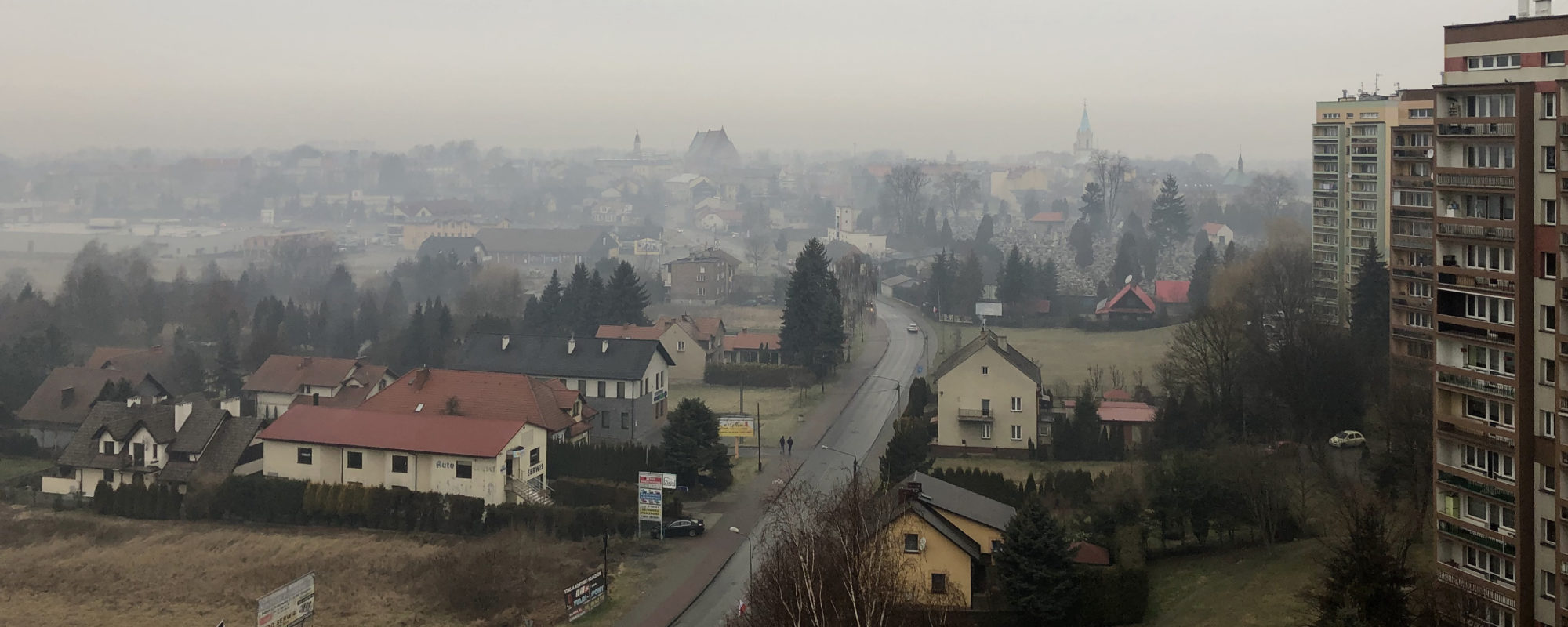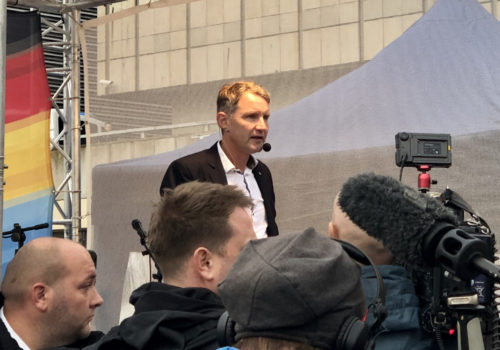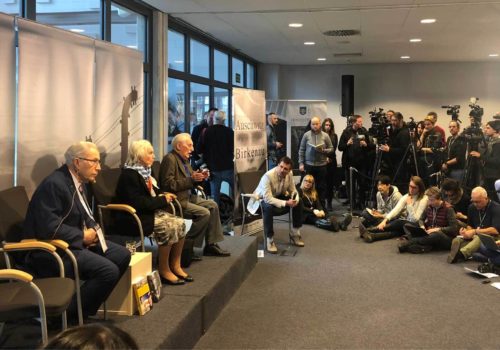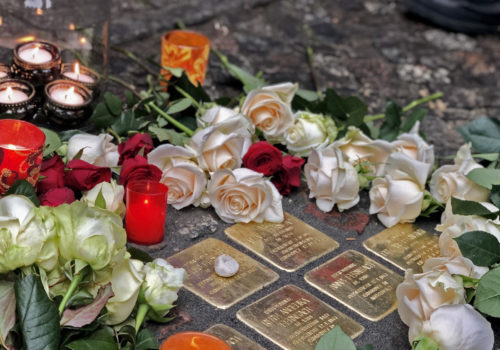OSWIECIM, Poland — For a few hours on a Monday evening in January, this corner of southern Poland was the center of the political and commemorative world. On the 75th anniversary of the liberation of Auschwitz-Birkenau, the concentration and extermination camp in which the Nazis murdered more than a million people, dozens of world leaders flocked to the memorial that now stands at the site of the camp. Survivors and elected officials spoke in sweeping speeches about the dangers of hatred and indifference and the crucial task of keeping the memory of Auschwitz alive for future generations. It was a powerful event at a time rising anti-Semitism and the electoral success of far-right parties gave the remembrances added urgency.
But all was quiet later that night in Oswiecim, the town of about 40,000 in which the memorial is located. A Christmas tree still stood illuminated in the town’s historic main square, a PA speaker playing the soft sounds of “Silent Night” as a settling fog blurred the contours of the historic buildings. The near-constant sirens of politicians’ police escorts before and after the ceremony had died down; most of the visiting media had departed to nearby Krakow or Katowice. As I made my way from the memorial to the apartment I’d rented for the week, in a brightly colored, Communist-style high-rise building east of the old town, I encountered only a few solitary figures.
Auschwitz is the most recognizable international symbol for the Holocaust: Approximately 90 percent of the 1.1 million people killed here were Jews, most of them in gas chambers immediately following their arrival. Understandably, the sheer scale of the horrors that occurred here are the primary focus when people come to town—but still, it’s striking how few realize there is a real, living town just down the road. Of the millions of people who visit the memorial each year—2.3 million came in 2019—only a small handful ever make it into Oswiecim; most, anticipating the emotions and horror that come with the visit, opt against staying the night.
The town exists, however, and people live here; they work at the nearby chemical plant, go grocery shopping and dance at clubs and their children play on playgrounds. And more than the mere fact of its existence, visitors to the memorial rarely realize Oswiecim has an interesting and complicated history of its own: Before the war, more than half the town’s 14,000 inhabitants were Jewish, Jews and non-Jews having coexisted here largely harmoniously for centuries. A Jewish couple ran the town’s vodka distillery, which once was one of Poland’s largest; the Great Synagogue, one of more than 20 synagogues and Jewish places of worship in town, could seat as many as 2,000.
If Auschwitz is synonymous with the Holocaust, Oswiecim is perhaps more emblematic of the nuances involved in Poland’s story, the ones that—like the town itself—often get lost in the shuffle of politicized historical narratives. The story of Oswiecim is one of myriad such local histories across Poland, some of which have been uncovered and some of which haven’t; perhaps because of its vicinity to the memorial, local historians and activists say it’s been easier—although at times also more fraught—to uncover the traces of what happened here. And a number of museums and local organizations have begun to do just that in recent years: Tell the town’s story to those Auschwitz visitors willing to stick around a bit longer and listen to it.
“Oswiecim and Auschwitz are two worlds. They are close to one another, they are connected because history connected them, but they are different,” Apolonia Maj, head of the town’s cultural center, told me in her office, the sounds of a seniors’ choir practice coming from next door. “The city in my opinion does everything to reconcile [its] two roles… This is a city that connects the past and the present, and is looking into the future.”
At a time in which the national government is advancing a simplified, more glorious version of Polish history, the kinds of efforts to examine and teach local history taking place on the ground here may provide lessons for how to preserve a more nuanced understanding of the past.
* * *
The politics of memory in Poland are visceral, emotional and—as with many things I’ve written about as an ICWA fellow—significantly more nuanced than most of the political discourse would suggest. They play a central role in the national narrative peddled by the right-wing populist Law and Justice Party (PiS), which has governed the country since 2015.
In PiS’s understanding, Polish suffering, not the Holocaust, stands at the center of the country’s narrative surrounding World War II. Poland was the first major victim of Nazi aggression, and there was indeed a great deal of suffering here: After Hitler made a pact with Stalin to divide Poland between Germany and the Soviet Union, his army invaded on Sept. 1, 1939, triggering the beginning of the war. By 1945, Warsaw was completely destroyed, only around a few thousand people remaining in a city that had once housed 1.3 million; 6 million Poles, including 3 million Jews, had been killed; and millions more had been displaced. The scale of destruction, death and displacement here is difficult to fully comprehend.
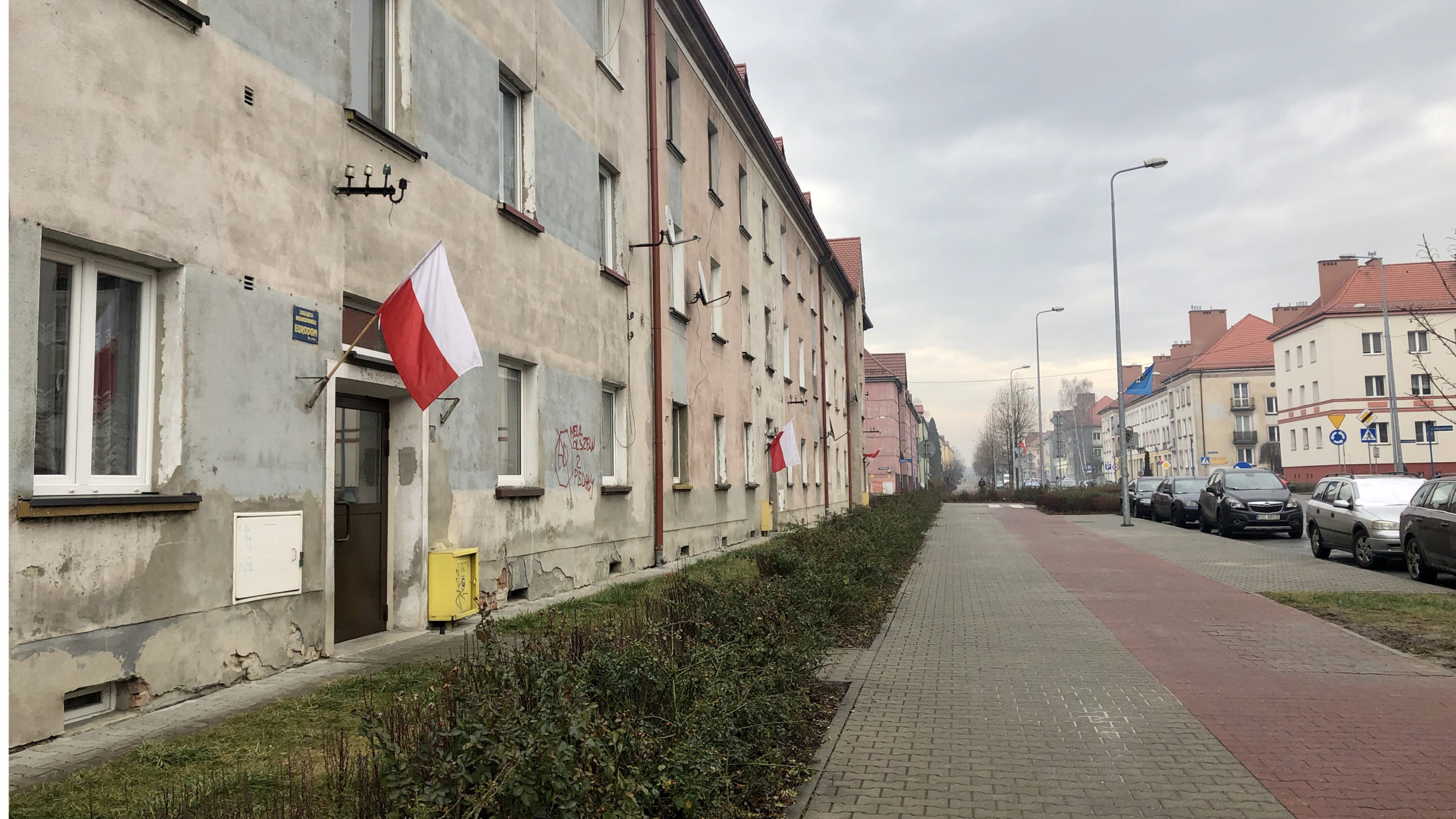
In Bloodlands, his seminal history of the part of Europe situated between Germany and the Soviet Union, the historian Timothy Snyder explains that the civilian deaths in Poland and across the “bloodlands” add up to approximately 14 million. They include not just the Jews killed in the Holocaust, but many millions more non-Jews who were starved, shot or gassed as a result of Hitler’s and Stalin’s murderous policies. “The photographs and films of German concentration camps were the closest that most westerners ever came to perceiving the mass killing. Horrible though these images were, they were only hints at the history of the bloodlands,” he writes. “They are not the whole story; sadly, they are not even an introduction.”
But to tell solely the story of Polish suffering in the war would be incomplete: Poland was also the site of the most horrific Nazi crimes, where millions of Jews—not just Polish Jews—lost their lives. Auschwitz may be the most visible and well-recognized symbol of the Nazis’ mass extermination efforts, but the other deadliest sites—Treblinka, Sobibor, Belzec, Majdanek—were also located on what is now Polish soil, making Poland an integral part of the history of the Holocaust. A focus on Polish suffering minimizes or sometimes even excludes the systematic slaughter of Europe’s Jews—and leaves no space for discussion about those Poles who did indeed collaborate with the Nazis or inform on their Jewish friends and neighbors.
“The ruling party treats history as black and white,” Agnieszka Haska, a researcher at the Polish Center for Holocaust Research who focuses on telling Jewish stories, explained over coffee in Warsaw my first evening in town. “For every story of Polish suffering, Polish victimhood, Polish people shot for hiding Jews, there is a neighbor next door who’s the reason they were shot.”
“They’re choosing only one part of the story,” she continued. “You cannot pick just one piece like at a buffet, taking one plate and not the other.”
It’s common in post-Communist countries—many of which began seriously dealing with their World War II histories only after the fall of the Berlin Wall in 1989—to downplay wartime complicity in favor of demonizing Communist-era crimes. In her book on Holocaust remembrance in Central and Eastern Europe, Red Star, Yellow Star, the historian Jelena Subotic explains that that is a product of unstable national identities. Holocaust remembrance “challenges the security of a nation’s identity because it problematizes the very biography on which this identity was founded,” she writes.
It wasn’t always this way. For a brief period after the fall of the Wall, Polish society seemed open to debating its complicated role in the war—including the unsavory parts. Central to that discussion and the subsequent national soul-searching was Jan Tomasz Gross’s 2001 book Neighbors, which tells the story of the town of Jedwabne: There, in 1941, the entire local Jewish population was murdered not by the Nazis but their Polish neighbors.
If Auschwitz is synonymous with the Holocaust, Oswiecim is perhaps more emblematic of the nuances involved in Poland’s story, the ones that—like the town itself—often get lost in the shuffle of politicized historical narratives.
“People were ready to touch very difficult topics,” Dariusz Stola, who until last February served as the director of the POLIN Jewish Museum in Warsaw, told me. “In a country which was really a victim of Nazi oppression, admitting that there were Poles who did horrible things—that was really difficult.”
But there was also a downside to reopening traumas like Jedwabne: It created a backlash that led some political actors—including PiS—to push back on the ways in which acknowledging complicity damaged the kind of Polish identity they advocated.
“This right-wing politics of history by Law and Justice, saying that as a nation we should… somehow reject this critical approach to our history, we should focus upon the glorious approach—to some extent it was a reaction to the trauma of the Jedwabne debate,” Pawel Machcewicz, former director of the Museum of the Second World War in Gdansk, told me.
* * *
Both Stola and Machcewicz have learned firsthand that PiS doesn’t approach memory politics passively—the government’s actions in that area ultimately cost both of them their jobs. Since taking office, the party has approached issues of history and memory directly, seeking to control the historical narrative in as many ways as possible.
Its strategy is perhaps best illustrated by the now-notorious 2018 “Holocaust law,” which sought to legislate the way Polish history could be discussed. The measure—primarily aimed at scholars like Gross, who in their view dug too deeply into questions of Polish complicity, but also at foreign journalists who referred to places like Auschwitz as “Polish death camps”—made it illegal to suggest Poland or Poles were complicit in Nazi crimes, and initially came with a penalty of up to three years in prison. Under international pressure, including from the United States and Israel, the government amended the law to remove potential jail time and instead impose a hefty fine.
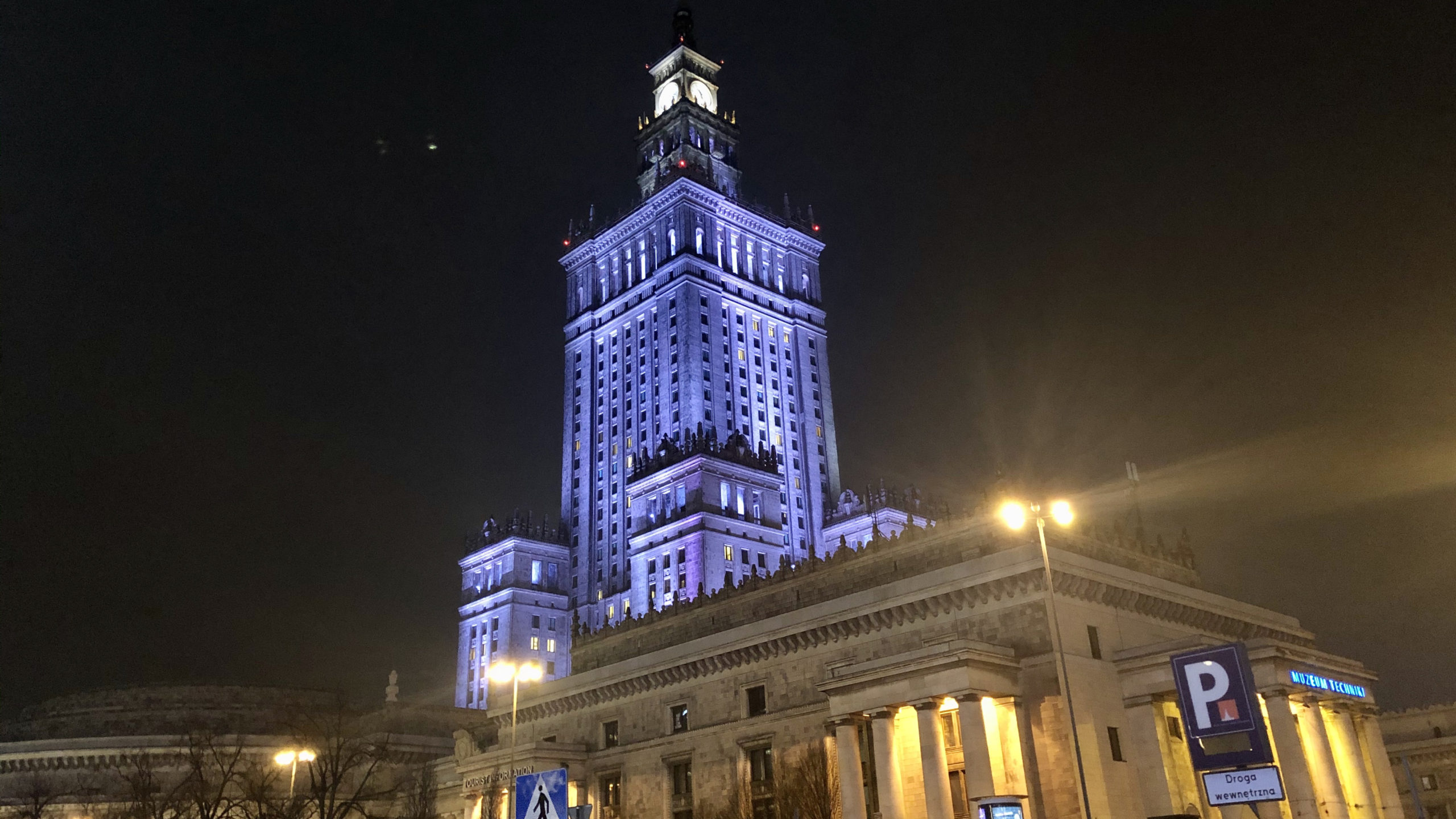
“It was totally damaging for Poland,” said Wojciech Przybylski, editor-in-chief of Visegrad Insight, a Warsaw-based organization. He added that the law was ultimately counterproductive, immediately increasing journalists’ references to Auschwitz or other Nazi sites as “Polish death camps” that had seen a decline before the law’s enactment.
Ensuring Poland’s reputation remains unsullied by association with the camps is clearly still a priority for the PiS government. In November, Prime Minister Mateusz Morawiecki wrote an open letter to Netflix CEO Reed Hastings about a map that appears in its documentary series “The Devil Next Door.” (Rather than show a map of Nazi territories at the time, the documentary—about the life of a former Nazi prison guard—included one that plotted them on a current map within Poland’s borders.)
“As my country did not even exist at that time as an independent state, and millions of Poles were murdered at these sites, this element of ‘The Devil Next Door’ is nothing short of rewriting history,” Morawiecki said. Netflix caved to the pressure, agreeing to change the map.
Poland’s top politicians also began to seek greater editorial control over museums, the primary way many people interact with the country’s history. At Stola’s POLIN Museum, which opened in 2014, a series of interactive exhibits tells the thousand-year story of Jews in Poland. The award-winning institution was intended to fill a gap for people who, upon visiting the country, see only sites of Jewish death and destruction but few visible traces of life and culture.
The museum is governed by a three-way partnership between the city of Warsaw, the Jewish Historical Institute and the national government, which helped shield Stola from government retaliation. PiS didn’t intervene in his work at first. But when he created an exhibit for the 50th anniversary of the Communists’ 1968 purges, a post-war campaign of anti-Semitism that caused many of Poland’s remaining Jews to emigrate, he included some quotes from PiS-aligned figures, comparing their tone to that of anti-Semitic rhetoric five decades earlier. Incensed political leaders saw it as a direct attack on the government.
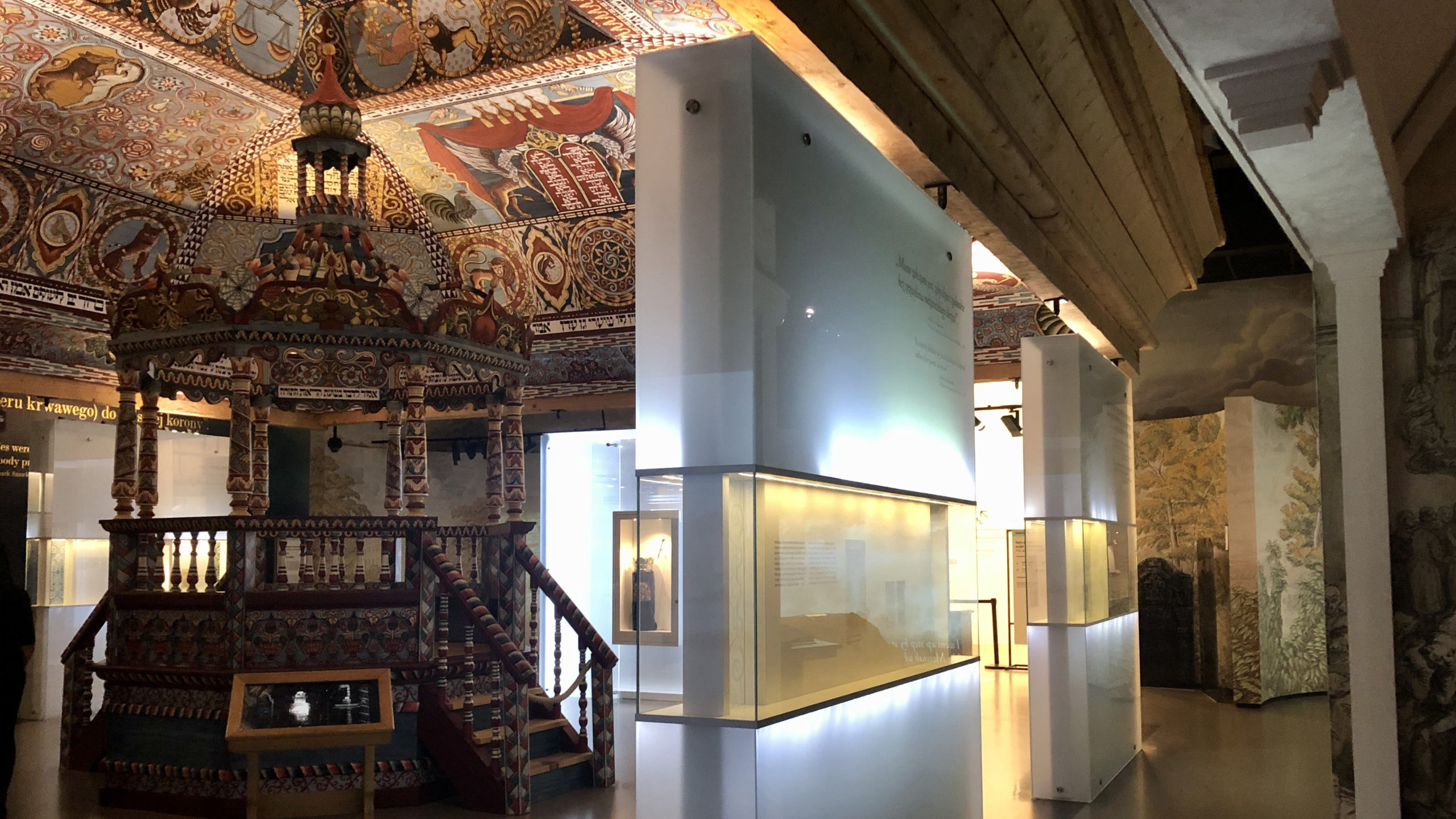
They couldn’t fire him outright, but as soon as his contract ran out last February, the minister of culture refused to reappoint Stola to the position. He remained in limbo until earlier this month, when he finally resigned; it had become clear the government was unwilling to budge on his reappointment. Stola’s deputy director and the museum’s acting director since last year, Zygmunt Stepinski, has taken over.
When we spoke in late January, Stola was still awaiting word about his fate; he told me he was worried mainly about the museum. “I’m concerned about the future—not about myself, because I go back to academia, this is my job. But [the minister for culture] did not remove me just to leave the museum alone,” he said. “This is also a serious blow to this culture of dialogue and cooperation which had developed between Poles and Jews in the last 30 years.”
PiS has also intervened at Machcewicz’s Museum of the Second World War in Gdansk, which opened in 2017. Government officials said the museum’s exhibits didn’t focus enough on Polish history and Polish victims of the war, criticizing Machcewicz even before the museum opened its doors. Like Stola, he was eventually forced out of his position; he spoke to me by phone from Yale, where he is a visiting professor this semester. PiS, he said, “exploits the fears that Poland is under siege, that other nations want to present Poles as perpetrators in the Holocaust, as not heroes but villains.”
Still, Machcewicz told me that in some ways, he’s encouraged by the way things unfolded at his museum. One could look at it as a defeat for those committed to full, multi-perspective historical research—or, considering PiS has changed only a small fraction of what’s inside the museum, proof that historians can still manage to tell (most of) the story they want to tell.
Ensuring Poland’s reputation remains unsullied by association with the Nazi concentration camps is clearly still a priority for the ruling PiS government.
“If you look closely… This is about the victory of a bunch of historians who managed to open to the public the biggest historical exhibition in Poland, despite all the counteractions undertaken by the government,” he said. “So this is, in my opinion, about the victory of civil society—despite all of what happened afterward.”
* * *
In Oswiecim, these debates feel simultaneously far away and ever-present. The 75th anniversary celebration at Auschwitz-Birkenau came amid a fresh spat over World War II history, this time initiated by Russia’s Vladimir Putin: In a December speech, he placed responsibility for starting the war on Poland. The Polish government, backed by the European Union, blasted the charge as baseless and dangerously revisionist.
Although not all locals follow such news obsessively, it’s hard for them not to be aware of and affected by it: “Whenever there is anything about Holocaust, it always touches Auschwitz. This is frustrating to us, the inhabitants [of Oswiecim],” Mirek Ganobis, a lifetime resident of the town and an amateur local historian, told me. Politicians who seek to instrumentalize Holocaust history politically don’t realize that “here in Oswiecim we feel it more than others,” he added.
I spoke with Ganobis one afternoon at the Jakob Haberfeld Story Museum, a newly opened vodka bar and small exhibit in the basement of a building on grounds that used to belong to the Haberfeld vodka factory. The Haberfeld family made vodka for more than a century, becoming one of the biggest producers in Poland. When the war broke out in 1939, Alfons and Felicia Haberfeld were in New York for the World’s Fair; they had left their 2-year-old daughter Franciszka in Oswiecim with Felicia’s parents. Alfons and Felicia Haberfeld weren’t allowed back in the country, remaining in the United States until the end of the war—but while they were gone, Franciszka and her grandparents were deported and killed.
Most of the museum’s artifacts are objects Ganobis has gathered during his decades of interest in local history. Growing up in Oswiecim, he told me through a translator, his grandmother would tell him about the history of the city’s Jews and the synagogues and house of worship that had once stood there. But having never actually met a Jew—by this time there were none left in town—he had no idea what the word meant. “It was something unreal because I would go to the square but the well I heard about from my grandmother was not there,” he said, “She told me about synagogues, but there were no synagogues; she told me about Jews, but there were no Jews.”
After his grandmother died, Ganobis began asking others to tell him about Oswiecim’s Jews, and about their place in the town’s long history. Some looked at him with suspicion, wondering whether he was trying to help Jewish families recover lost property or possessions. But others told him what they knew, and Ganobis, armed with a tape recorder he’d saved up to buy, took it all down. He also began collecting artifacts he found around town, many of them to do with the Haberfeld factory.
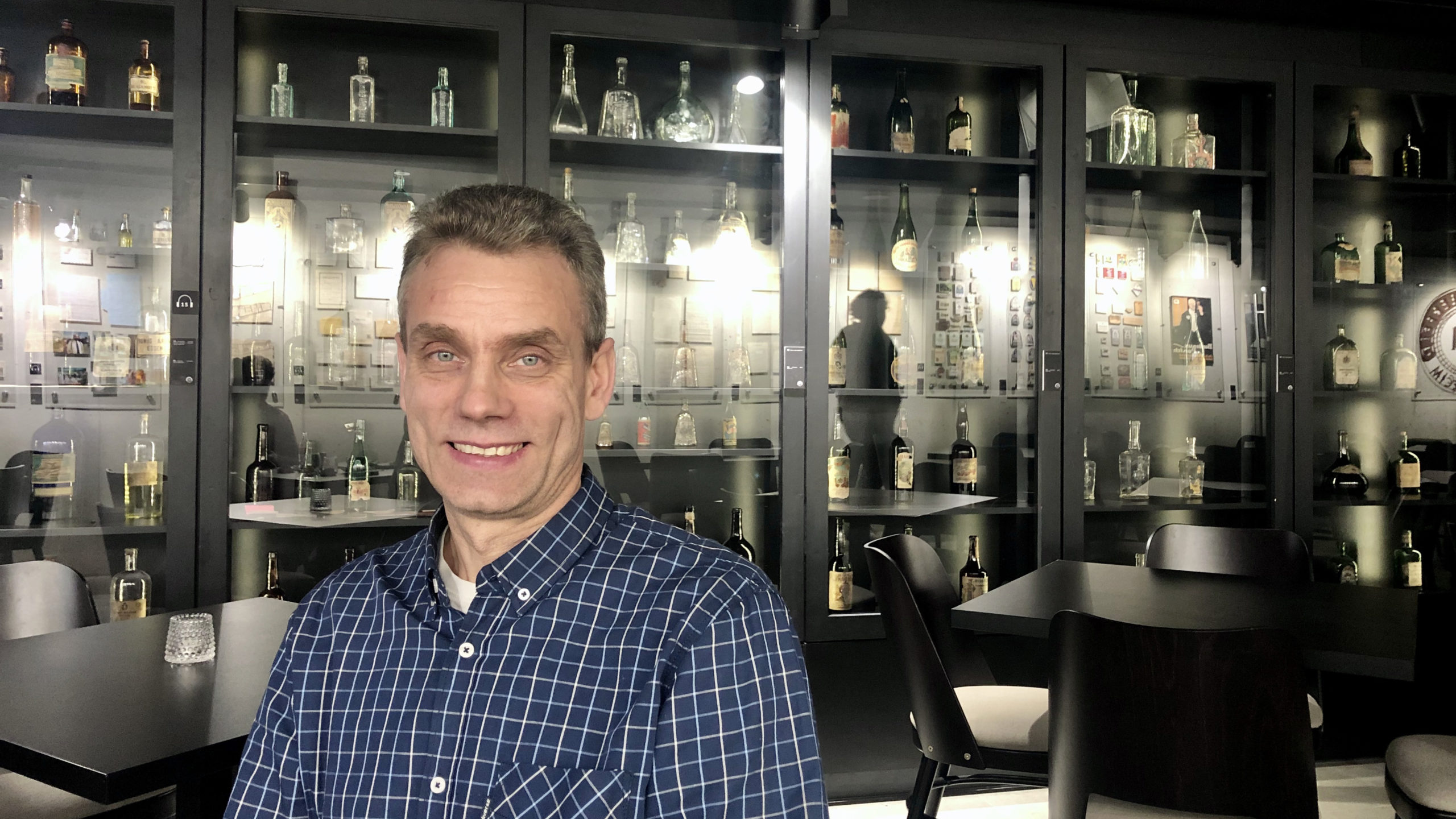
When Felicia Haberfeld returned several years ago, he met her by chance and told her he’d be happy to donate his collection should she ever decide to create some sort of museum. That’s how the Jakob Haberfeld Story Museum came to be: Opened only last summer, the museum tells the Haberfelds’ story through letters, photos and old bottles and supplies from the factory. At the bar, visitors can sample a number of vodkas produced from the original Haberfeld recipes.
“Until now, the tourists would pass by the town of Oswiecim, not knowing that it existed before the war, that the town is developing, that people live and are born here,” Ganobis told me. “Thanks to the institutions that are created here, tourists are slowly coming… They’re starting to learn that this town existed before the war, that it has an 800-year-long history.”
* * *
The Jakob Haberfeld Story Museum isn’t the only new addition to Oswiecim’s museum offerings in recent years. Across the street stands the Castle Museum, which explains some of the town’s history and recreates interiors from various families’ pre-war homes. And adjacent to the castle, on a quiet square—the one from which many of the town’s Jews were deported to nearby ghettos in 1941—is the Auschwitz Jewish Center, which comprises a small museum and a restored synagogue.
The desire to tell the story of Jews in Oswiecim began in the late 1990s; the synagogue opened in 2000, and the museum came shortly after. The museum includes a small but well-curated exhibit shedding light on life in Oshpitzin, the Jewish name for Oswiecim (from the Aramaic word for guests, ushpitzin). Next door, in a house once owned by Oswiecim’s last Jewish resident, the museum opened a corresponding café and events space; last fall, it finished a memorial a few blocks away on the site of the former Great Synagogue, which the Nazis burned down in 1939. Visitors can even take a self-directed tour of the museum and various former Jewish sites around town through the museum’s Oshpitzin mobile app.
The museum’s director, Tomek Kuncewicz, told me the center’s sites serve as a chronicle of the town’s history leading up to the Holocaust, separate from that of the camp. “It’s a place which commemorates this community, the community of Oshpitzin, the heritage that was destroyed,” he said.
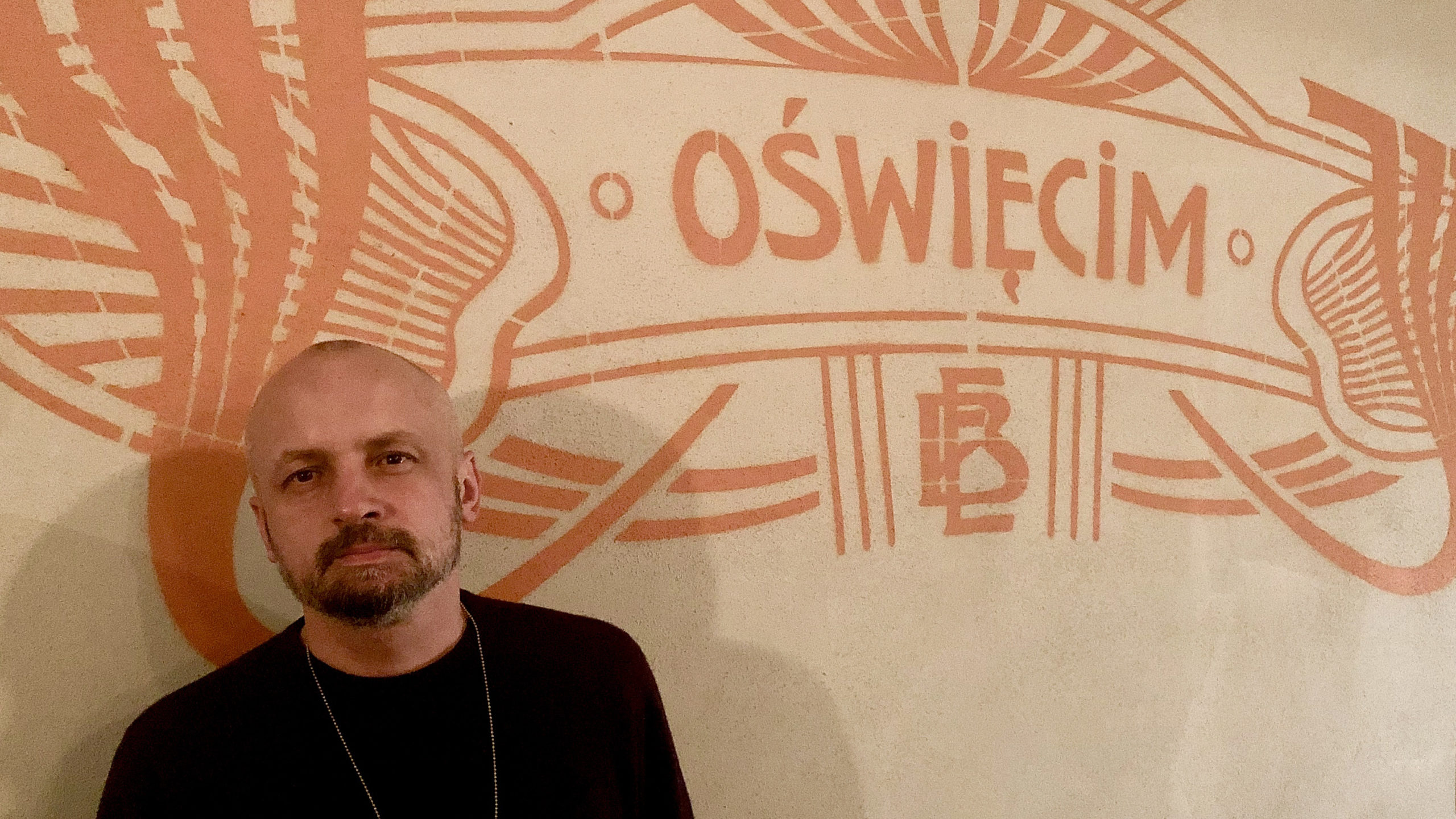
Compared with Auschwitz-Birkenau down the road, the number of people who visit the center is just a small fraction: approximately 36,000 people came in 2019, he told me, including local school groups. Most of those who visit are Polish, German or Jewish from a variety of countries. The center also hosts workshops for various adult groups, including teachers and police officers. Having the Auschwitz-Birkenau memorial down the road, Kuncewicz said the center feels a particular obligation to speak out and help contribute to fighting racism and anti-Semitism in whatever ways it’s able.
“Having a place like this and running a place like this in the vicinity of Auschwitz, there’s an obligation to be brave, to react,” he said. “I think that there’s no excuse to be silent if you know about some situation of racism, of anti-Semitism. I think it’s important to take a stance.”
* * *
On a Tuesday evening in Oswiecim, the day after the 75th anniversary events, the sounds of music would soon fill the streets around the center. In a packed basement, visitors and residents alike had seen the screening of “The Railway People,” a documentary about how Auschwitz-Birkenau inspired the Scottish singer Raymond Meade. Meade took audience questions afterward, then went over to the synagogue, where purple lights illuminated the stage where he’d perform.
When I first came to Oswiecim, my intention was to speak with residents about what it’s actually like to live next to a place where so many people were murdered and stands as a symbol of hatred and mass killing. I kept finding myself noting the signs of regular, daily life—a bustling restaurant, a playground, a shop selling wedding dresses—and feeling a sort of cognitive dissonance between something so normal and the deeply unsettling place down the road.
It’s not that I didn’t hear interesting perspectives on that topic: One young woman I met told me that despite having lived her whole life in town, she’d never been able to bring herself to visit the memorial because it would just be “too much” for her. Paweł, a 20-year-old barista in a coffee shop on the town square, said Oswiecim’s residents do encounter stereotypes when they travel elsewhere in Poland. But by the end of my time there, it was clear this was the wrong question to be asking—and one residents get far too often from visiting journalists. More interesting, I discovered through all my conversations, is the story the town itself has to tell, about its own history and place in Polish-Jewish relations.
Like all those I spoke with in Oswiecim involved in showcasing local history, the Jewish Center’s Kuncewicz is very conscious of those questions, and of where a place like Oswiecim fits (and sometimes doesn’t fit) into broad historical narratives much bigger than the town’s. He told me he worries about where a simplified sense of Polish history, deeply emotional for many Poles, could ultimately lead—and whether there’s still a chance for a more nuanced discussion of such issues down the line.
“This past, this history—people’s identity is based on this, so in a way, you cannot touch it,” Kuncewicz told me. “The question is whether this will be stopped and again people will be able to look at their histories critically and in a nuanced way—or whether we will be taught to just look at ourselves as heroes.”

